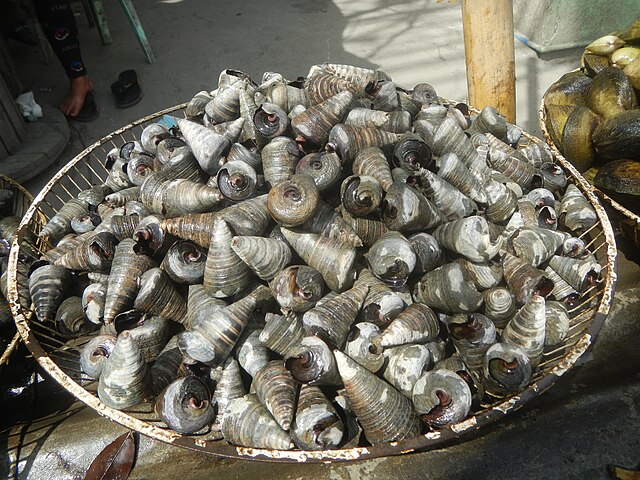Forestry plays a vital role in sustaining ecosystems, and the apitong tree (Dipterocarpus grandiflorus) is no exception. Known for its economic and environmental importance, apitong thrives in Southeast Asian countries. This article explores the species, habitat, physical traits, and farming benefits. Understanding the Apitong Tree Habitat and Natural Growth The apitong tree is native to tropical forests in countries like the Philippines, Malaysia, and Indonesia. It thrives in well-drained soils with high humidity and moderate rainfall. Standing 30-40 meters tall, this tree creates a dense canopy, benefiting forest ecosystems. Apitong prefers lowland forests but can adapt to hilly regions. Physical…

Bamboo farming is a versatile and eco-friendly agricultural activity. Known for its fast growth and multiple uses, bamboo (scientific name: Bambusa vulgaris) plays a vital role in forestry and agriculture worldwide. Bamboo farming in the Philippines is especially popular due to the tropical climate and the plant’s adaptability. Why Choose Bamboo Farming? Bamboo farming provides numerous benefits for farmers and the environment. This hardy grass species grows rapidly, often reaching full height in a single growing season. Unlike traditional timber, bamboo regenerates after harvesting without needing replanting. Its uses and benefits make it a smart choice for sustainable agriculture. Key…

Telescope snails are fascinating marine creatures, often called bagongon or bagungon in the Philippines and rodong or berongan in Malaysia, Singapore, and Indonesia. Scientifically known as Telescopium telescopium, these snails thrive in mangrove forests and brackish waters. With a long spiral shell that is dark brown or gray, they typically grow up to 10 cm in length. Their unique shape and color make them easy to spot in their natural habitat. Beyond their appearance, bagongon are packed with nutritional value and play a vital role in local economies, particularly in coastal communities. Nutritional Content of Telescope Snails Telescope snails are rich in essential nutrients…

John Marks gamefowl has a storied history that captivates enthusiasts worldwide. Known for their resilience and unique traits, these birds originated from the careful breeding practices of John Marks, a renowned breeder. His dedication to producing gamefowl with unparalleled strength and agility has left an enduring legacy. The Marks Mugs gamefowl, in particular, stands out due to its consistent performance in competitions and superior genetic traits. John Marks began his work on these birds decades ago, combining various bloodlines to achieve the ideal fighter. The result was a gamefowl line known for its endurance and fighting spirit. Today, the legacy…

Mug gamefowl are admired for their strength and resilience in cockfighting competitions. Known for their unique fighting style and stunning variations, like the blue mug and grey mug, they remain a favorite among enthusiasts. Let’s explore their history, characteristics, and competitive traits. The Origins of Mug Gamefowl The Mug gamefowl trace their lineage to Irish and Old English game birds. These roosters were bred for their powerful build, agility, and ferocity in fights. Over time, they were crossed with other breeds, enhancing their physical prowess and broadening their bloodlines. Some popular varieties include: Blue Mug: Recognized for their bluish-gray feathers…

The Coal Miner Mug gamefowl is a notable breed with a rich history that has cemented its place among poultry enthusiasts and gamefowl breeders. Known for its strength and unique characteristics, this rooster breed boasts a fascinating origin story and impressive fighting abilities. The History and Origin of Coal Miner Mug Gamefowl The Coal Miner Mug gamefowl originated in the United States, particularly in rural communities. Breeders developed the line for its resilience, sharp instincts, and adaptability in competitive settings. The name "Coal Miner Mug" reflects its roots, as it was popularized in regions where coal mining was prevalent. This…

The Racey Mug gamefowl is prominent in the world of poultry and gamefowls. Known for their unique lineage, these birds boast a fascinating origin and remain a favorite for enthusiasts. The breed's development showcases a mix of heritage and skill, making it a standout among others. Developed from strong bloodlines, the Racey Mug rooster stems from a long history of selective breeding. Enthusiasts sought birds with resilience, quickness, and endurance, leading to a breed known for its tenacity. Let’s explore the details behind this remarkable gamefowl. Origins and Breed History of the Racey Mug Gamefowl The Racey Mug game fowl…

Brassback gamefowl has a rich history tied to the traditions of poultry enthusiasts worldwide. Originating from selective breeding, these birds became known for their unique coloration and resilience. Breeders prized their golden-brown feathers with darker undertones, a distinctive feature seen in both the brassback butcher and black brassback gamefowl. The brassback bloodline stems from crossbreeding heritage gamefowl to achieve the ideal mix of endurance, strength, and stunning appearance. Over the years, this breed gained popularity in farming communities, not just for their beauty but also for their utility. Uses of Brassback Gamefowl Brassback breed serves multiple purposes, from being prized…

The Black Jap gamefowl has an impressive and storied history that spans decades. Known for their resilience, these roosters are celebrated in gamefowl breeding and competition circles for their tenacity, strength, and adaptability. Originally bred in the United States, the Black Jap gamefowl lineage was influenced by the integration of various Asian bloodlines, lending them their distinctive features and robust fighting spirit. Early breeders of the Black Jap gamefowl aimed to create a bird that could excel in both stamina and strategic combat. Over time, this breed earned a reputation as one of the ring's most dependable and versatile choices.…

The Black Devil Warhorse gamefowl is a prized breed known for its rich history and unique fighting style. This gamefowl has captured the attention of enthusiasts and breeders due to its remarkable traits and storied lineage. Let’s explore the origins, uses, physical traits, and temperament of this fascinating rooster. A Glimpse Into the History of the Black Devil Warhorse Gamefowl The Black Devil Warhorse game fowl traces its roots back to early gamefowl breeding in the United States. This breed emerged through careful selection, combining strength, endurance, and agility. Breeders valued the bird for its performance in the pit and…

